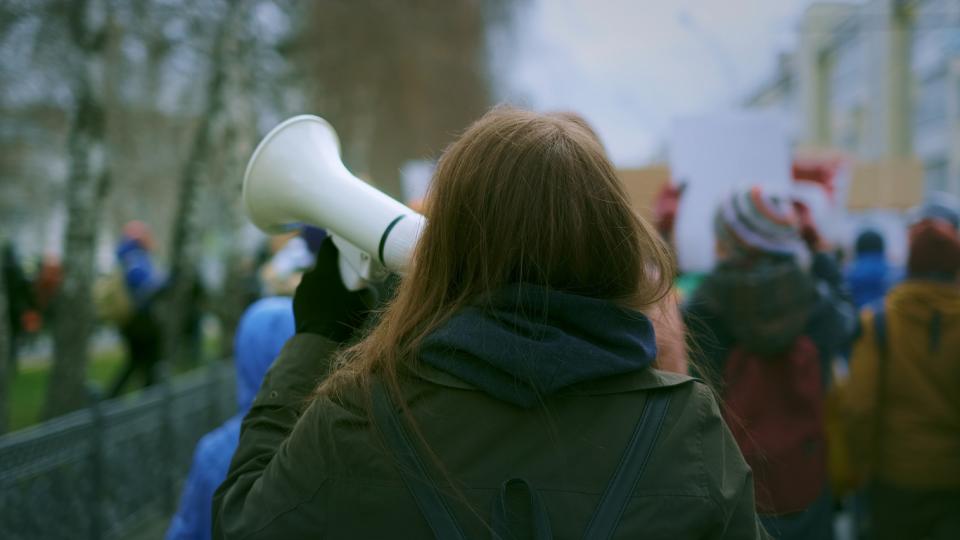The Trump administration’s illiberal and anti-intellectual ultimatums have had far-reaching effects. The nation and its educators are in a state of upset, and the idea that this moment is unprecedented in United States history has cropped up frequently. While true, this conception rests on a misunderstanding present in the common comparison of the Trump administration’s policies to 1930s European fascism: the idea that something “unAmerican” lurks beneath the administration’s various attempts to curb free speech.
That is a delusion. The political scientist Christina Greer, my colleague here at Fordham, wrote recently that Black Americans aren’t surprised to see brutality run roughshod over rights. In a highly anticipated and timely forthcoming book, the historian Joshua Clark Davis reminds us that 1960s civil rights activists consistently confronted surveillance, violence and retaliation at the national and local levels. Historians who study the mass incarceration of Japanese-Americans during the Second World War or the mass deportation campaigns of Mexican-Americans during the Great Depression could also point to historical continuities. So could those who study the boomerang effects of the more violent and oppressive consequences of US economic and military power in the 20th-century world.
Most historians would agree that political and ideological hostility has consistently joined racism, sexism and other forms of xenophobia in US history. They also know that American universities often bent with the prevailing winds and justified limits to freedom in the name of security. During the First World War, universities invoked the Espionage and Sedition Acts to fire and blacklist professors who opposed the war. Public and private universities required anti-communist loyalty oaths during McCarthyism.
University leadership regularly called in the police or national guard when dealing with civil rights, Vietnam, and anti-apartheid protesters. Schools enacted official “speaker bans” and exerted unofficial pressure to prevent student and faculty groups from bringing “subversive” speakers to campus.
- Spotlight guide: What can universities do to protect academic freedom?
- Guidance on equity, diversity and inclusion in higher education
- Collection: Higher education’s role in upholding democracy
It is easy to imagine a future historian assigning similar guilt to today’s university leaders, one in which their quotes about “outside agitators” or “inflammatory rhetoric” appear next to Joseph McCarthy’s “ideological sabotage” or Spiro Agnew’s “order and respect”. Let’s not forget that the spark to the illiberal kindling this time began in the fall 2023 and spring 2024 semesters, when many universities failed to defend the principles of free speech when faced with protests over Israeli military strikes in Gaza.
Future historians will be able to point to other contemporary examples of compliance – the removal of DEI from websites and job descriptions, the NCAA ruling on trans athletes, the defence of investments in arms manufacturers, or the failure to protect immigrants. The Trump administration’s unapologetic authoritarianism remains remarkably unchanged from the past and seems likely to continue. Bound by dogma, illiberal people will continue to condemn universities through wrong-minded stereotypes about individual indoctrination or institutional bias.
Illiberal forces will continue to collaborate against free speech and academic freedom. It is thus all the more important that we stand together whether or not we agree about Gaza, DEI, divestment or immigration. This is even truer given President Trump’s recent statement – “the homegrown are next” – and rumours of contracts for new mega-prisons in El Salvador.
What can be done?
How exactly should university faculty confront the American illiberal peril? What follows months of resolution-writing, signature-collecting and internal discussions with our university leadership – who often quietly agreed but, until recently, saw compelling reasons not to act? What happens now that it appears – in the face of faculty, student and alumni pressure – that university presidents are willing to stand up individually and collectively?
First, faculty must be clear that campus crackdowns on speech regarding any given topic feed into the greater illiberal impulse. There is no doubt that the Trump administration is using what is often described as the “Palestine exception” to justify attacks on higher education more broadly, both in terms of cutting federal funding and through the detention and deportation of our most vulnerable colleagues and community members. Suppressing dissent is always dangerous, and we should not forget the quickness and thoroughness of the punitive backlash, past or present.
Second, we must continue to look for linkages across universities. Important ones are already being made through Mutual Defense Compacts, legal aid funds and national umbrella groups like the AAUP and the AAC&U. Those linkages should point towards more confrontational policies, which may not be successful without external support. Universities have plans through which displaced students and faculty may continue to learn and teach. Calls for universities to refuse to allow ICE on campus are becoming more vocal. Local AAUP chapters are organising rallies and protests.
All of that should continue. But what else? Faculty might consider asking their leadership to explain to alumni associations the problems with “undue government intrusion”, as described in the joint statement by university and college presidents. Almost 40 per cent of Americans are college-educated, according to the US Census Bureau, and the numbers are higher for younger adults. University leadership will be doing free speech and due process a good service if they reach out directly to that constituency.
One final idea arises from the historian's long-running concern with archives and transparency. Professionally for me this is raised most immediately by the American Historical Association’s recent statements condemning efforts to censor or rewrite U.S. history on federal websites and at museums. Groups should follow the lead of the AAUP’s Mellon-funded Center for Defense of Academic Freedom and its current field guide and syllabus programmes.
There is a pressing need for a clearing house to collect and publish the scores of Faculty Senate resolutions, open letters, statements and speeches that are coming out almost daily. The first historical example that pops into my mind is a rare one: the post-1937 efforts of the American Committee for Non-Participation in Japanese Aggression to pressure the Roosevelt administration to censure civilian bombing. Like that and other more prominent examples, today’s effort should expand from colleges and universities to encourage alliances with our closest allies – local officials, journalists, national and international NGOs, religious organisations and law schools.
Maybe a mainstream academic or trade press could lead the effort, despite the clear risk of retaliation. Maybe a school with a large endowment could subsidise such a venture. It would be good for future historians, when they try to disentangle the moment. But, for now, these actions can act as a counterforce to the greater illiberal peril.
Chris Dietrich is an associate professor and chair of the history department at Fordham University.
If you would like advice and insight from academics and university staff delivered direct to your inbox each week, sign up for the Campus newsletter.




comment